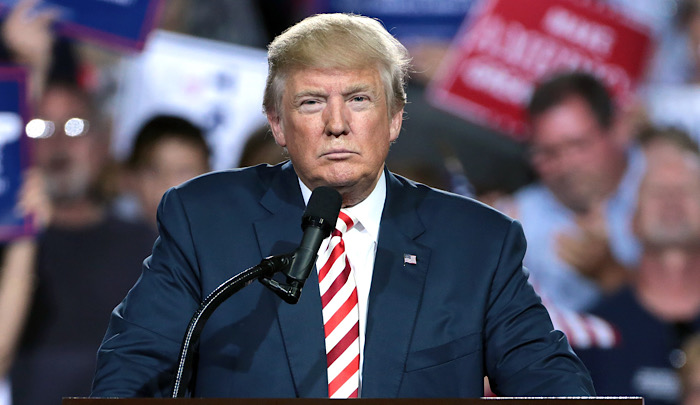Trump is Just Doing What Numerous Presidents Promised to Do
And he's enraged the Left by actually doing it when they issue empty promises.

|
Getting your Trinity Audio player ready...
|
To hear Democrats tell it, the Department of Government Efficiency (DOGE) is a monumental crime against the American people, who simply have to have a bloated, wasteful federal bureaucracy confiscating a significant portion of their income, or they simply cannot survive. Reality is, as is always the case when it comes to the left, different. In reality, Donald Trump and Elon Musk aren’t doing anything that numerous other presidents haven’t promised to do. The difference here is that Trump’s promises weren’t empty.
On November 9, 2011, the Obama administration proudly announced: “This morning, President Obama will sign an Executive Order that will cut waste and promote more efficient spending across the federal government. With this Order, the President is directing agencies to reduce spending on travel; limit the number of information technology devices (e.g. cell phones, smartphones, tablets, laptops) that can be issued to individual employees; stop unnecessarily printing documents that can be posted online; shrink the executive fleet of the federal government; and stop using taxpayer dollars to buy swag — the plaques, clothing, and other unnecessary promotional items that agencies purchase. Overall spending in the areas covered by the Executive Order will be reduced by 20 percent, saving billions.”
There were no such savings, of course. The leviathan federal government kept on growing as usual. But Obama was by no means alone in issuing empty proclamations about how he was cutting waste and fraud in the federal government. Bill Clinton was no better; he said during the 1992 presidential campaign that he would cut taxes on middle-class Americans and raise them only for the wealthy. On October 29, 1992, just five days before the election, he went further, promising to cut spending rather than renege on this pledge: “If the tax proposals I have made do not fund the spending levels I have proposed, then I will scale back the spending, cut other Government spending or both.”
Clinton didn’t envision having to do this, as he said on October 31 that his economic estimates were “good and sound” and again pledged reductions in spending rather than tax hikes if those estimates proved to be erroneous after all: “We might have to phase in the health care program over a couple of more years; we might have to slow down the education programs.” However, he reneged almost immediately. In a televised address on February 15, 1993, just three weeks after taking office, he claimed that despite his best efforts, keeping his promise had proved impossible: “I had hoped to invest in your future by creating jobs, expanding education, reforming health care, and reducing the debt without asking more of you, and I’ve worked harder than I’ve ever worked in my life to meet that goal. But I can’t, because the deficit has increased so much beyond my earlier estimates and beyond even the worst official government estimates from last year.”
A pattern of disingenuousness was established that continued throughout the Clinton administration, and beyond. In reality, Clinton opposed efforts to reduce the deficit by
cutting government spending. He opposed the 1993 Penny-Kasich Deficit Reduction Act, which proposed the elimination of numerous useless and wasteful government agencies. He also opposed the balanced budget amendment, a measure that would have prohibited deficit spending. In mid-1995, the Clinton administration made it clear: “Balancing the budget is not one of our top priorities.”
Jimmy Carter lowered taxes in 1978 and proposed cuts in federal spending, but contradicted his efforts to bring fiscal responsibility to the enormous and ever-growing federal government by creating two new Cabinet-level agencies: the Department of Energy and the Department of Education. The latter introduced the federal government into areas that had hitherto been under state or private control, and constitutional literalists pointed out that there was no mention of education in the nation’s founding document, and hence no clear warrant for the federal government to get involved in it. But few were concerned about such details.
A few years before that, Republican President Gerald Ford called for cuts in federal spending, but the Democratic-controlled Congress was loathe to accommodate him. However, when New York City Mayor Abraham Beame asked the federal government to take on his bankrupt, spendthrift city as a welfare case, Ford refused. Reporting the news, the New York Daily News ran the headline “FORD TO CITY: DROP DEAD.”
Ford’s reasoning, however, was sound. On October 29, 1975, he listed a number of programs that New York City maintained that were a clear waste of taxpayer money. He said that if he bailed out New York, “the primary beneficiary would be the New York officials who would thus escape responsibility for their past folly and be further excused from making the hard decisions required now to restore the city’s fiscal integrity.”
Ford explained: “If we go on spending more than we have, providing more benefits and more services than we can pay for, then a day of reckoning will come to Washington and the whole country just as it has to New York City. And so, let me conclude with one question of my own: When that day of reckoning comes, who will bail out the United States of America?”
The question still reverberates. DOGE is trying to stave off that day of reckoning. If the left doesn’t stop Trump and Musk from cleaning up the government, we may not have to ask who will bail out the U.S. for the foreseeable future.

